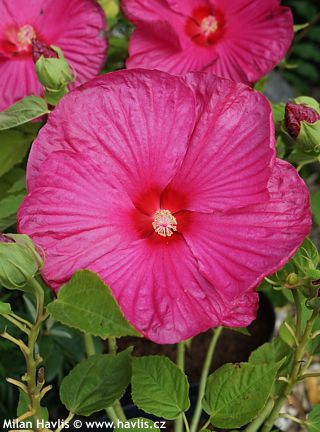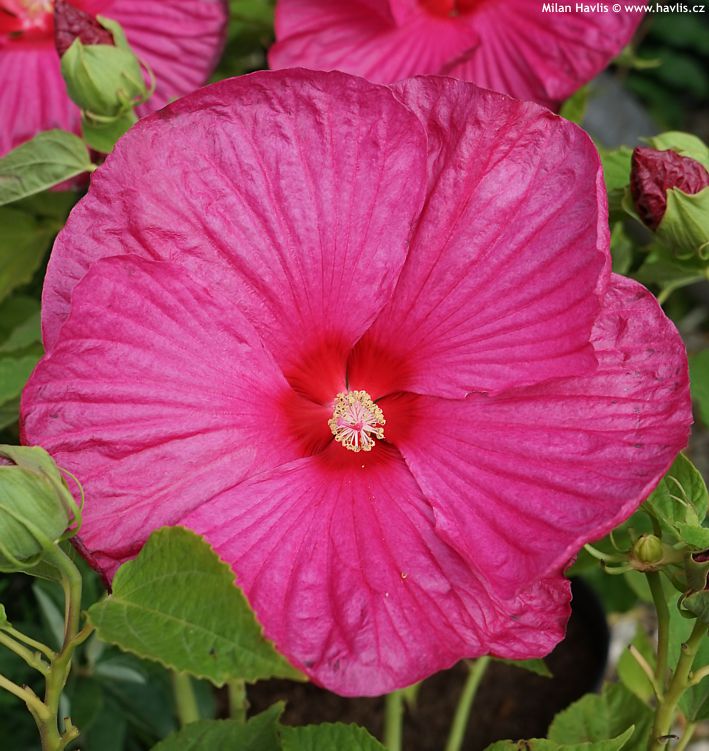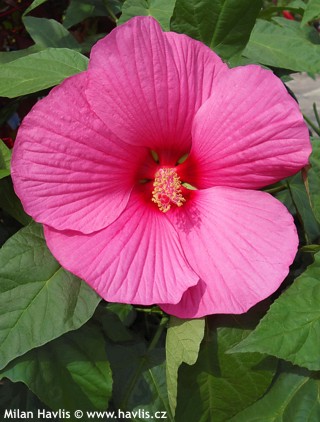Hibiscus moscheutos 'Pas490813' LUNA ROSE® swamp mallow, hardy hibiscus
size/type
mid-sized perennial,small shrub
usual height
0,4-0,6m
usual width
0,4-0,6m
leaves
deciduous broadleaf
colour of leaves
flowers
showy
colour of flowers
blooming time
August-September
location
full sun
USDA zone (lowest)
7 (down to -23°C)
winter protection
for zone 5+6

for zone 7

categorized
Hibiscus
Swamp mallow has been a sought after plant over the past couple of years and its popularity is rising as new varieties keep coming to the market. American breeder Ellen Leue from the Ball Horticultural Company in Illinois is behind the LUNA® series of so far 4 attractive varieties (by 2019): White, Blush, Red, and Rose.Description of the plant:
LUNA ROSE® swamp mallow bears large, 14-16 cm wide, rich pink flowers with a small dark purple pink eye in the centre from which rise a long pistil with numerous light beige anthers and a purple pink stigma at the top. It is a compact, dense growing perennial with sturdy stems and bushy growth. Deadheading of spent flowers and regular fertilizing from early August will encourage formation of new flower buds. Deciduous leaves are heart-shaped, medium green, and turn yellow in autumn. They do not have lobes like other hibiscus species. Swamp mallow and its hybrids are commonly suited for regular garden soil of any pH, just make sure it does not dry out. In hot and dry summers it is dependent on regular watering and feed supply. Use fertilizers with enough phosphorus for abundant flowering, or any other quick-release fertilizers where nitrogen is not predominant. Any fertilizing has to stop by end September. Still, nitrogen-based fertilizer is useful when the plant wakes up from dormancy in mid spring, but should not be used longer than 8 weeks. Hardy hibiscus emerges very late, sometimes as late as in late May.
For healthy growth and profuse flowering it needs a sunny location with a lot of moisture which can be achieved by good mulching. The soil has to be fertile and can be clay and boggy, never let it dry out either in summer or during dry winters - its fleshy roots need some moisture also in winter. Hardy to about -23°C (USDA zone 6). Protect the bottom of the stems from direct sunlight with plenty of mulch or fir branches during winter. Cut back the plant some 7 cm above ground level in spring after all frosts.
Last update 26-09-2019
QUICK PRICE OVERVIEW
CURRENTLY SOLD OUT
WANT TO TRY A SIMILAR PLANT?

















